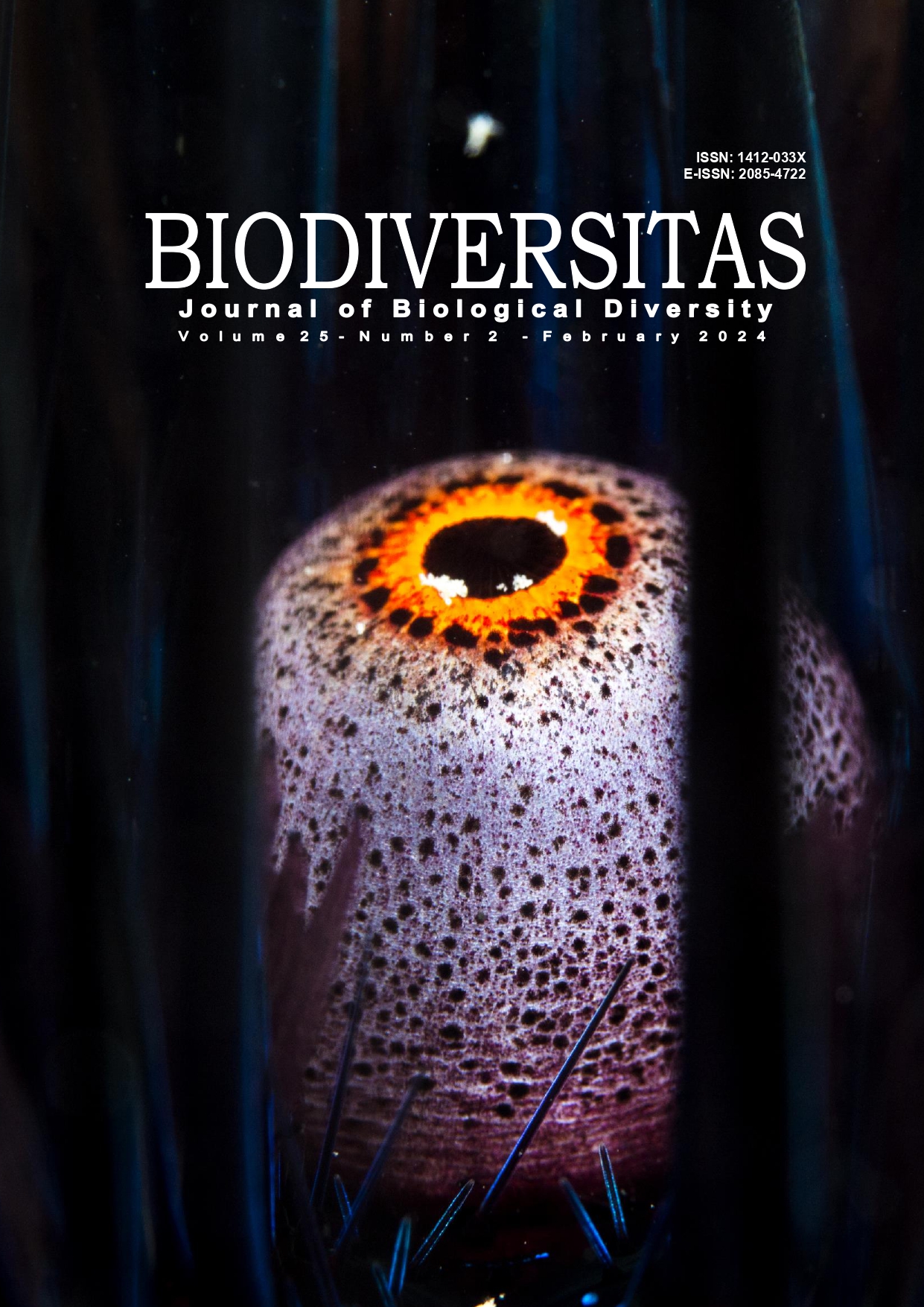Population dynamics of mud clam Geloina expansa (Mousson, 1849) in degraded mangrove area at Kendari Bay, Indonesia
##plugins.themes.bootstrap3.article.main##
Abstract
Abstract. Bahtiar B, Kasim M, Hati YIP, Ishak E. 2024. Population dynamics of mud clam Geloina expansa (Mousson, 1849) in degraded mangrove area at Kendari Bay, Indonesia. Biodiversitas 25: 616-623. Mud clams, Geloina expansa (Mousson, 1849), locally known as kalandue, are bivalves living in mangrove forests. These mud clams are currently experiencing ecological pressure, and are susceptible to the degradation of mangrove areas and the exploitation of the clams. This research was conducted in the mangrove forests of Kendari Bay for a year, from November 2016 to October 2017. Geloina expansa samples were collected throughout the mangrove forest area, and the water temperature was measured simultaneously with G. expansa sampling. The width of G. expansa shell was measured using a caliper. Population structure, growth, mortality, and exploitation rate data were analyzed using the Bhattacharya method, the von Bertalanffy inverse function, the width converted catch curve, and Pauly's empirical formula, all accommodated in the FiSAT II program version 3.0. The results showed that the G. expansa population was spread out from two and three-size groups, i.e., juvenile, adult, and old-size groups, dominated by the older group. Geloina expansa growth model follows the Lt = 10.08-(10.08-0.025) e-0.6t, which generally consists of 1.5-2.5 years of maturity. The total mortality (Z) of G. expansa was 2.26, in which the highest contributing factor was natural mortality (M) as opposed to fishing mortality (F), with values of M = 1.72 and F = 0.56. Thus, the exploitation rate (E) was within the low category, with a value of 0.24.
##plugins.themes.bootstrap3.article.details##
Most read articles by the same author(s)
- BAHTIAR BAHTIAR, MUHAMMAD FAJAR PURNAMA, MA’RUF KASIM, ERMAYANTI ISHAK, Population dynamics of blood clams Tegillarca granosa in Kendari Bay, Southeast Sulawesi, Indonesia , Biodiversitas Journal of Biological Diversity: Vol. 23 No. 10 (2022)
- BAHTIAR, YNGWY EZRA JIWANI, MUHAMMAD NUR FINDRA, ERMAYANTI ISHAK, Temporal variation of peanut worm (Siphonosoma australe-australe) reproduction in Toronipa Beach of Southeast Sulawesi, Indonesia , Biodiversitas Journal of Biological Diversity: Vol. 25 No. 8 (2024)

